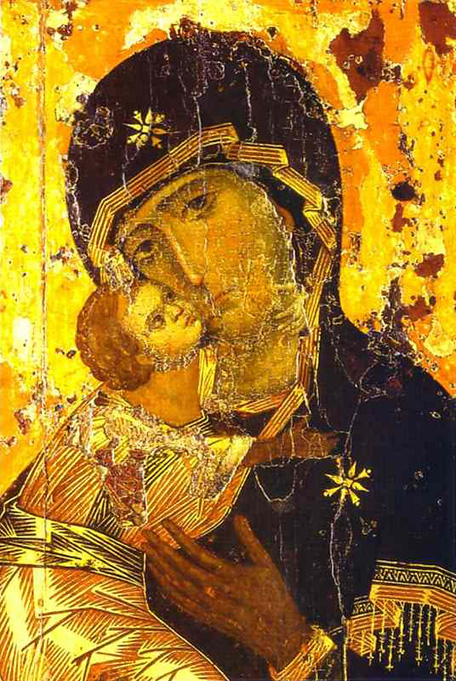Facts About Virgin of Vladimir
The Virgin of Vladimir, also known by various names such as the Vladimir Mother of God, Our Lady of Vladimir, and Theotokos of Vladimir, is a revered 12th-century Byzantine icon depicting the Virgin Mary holding the Child Jesus. This icon is not merely a magnificent piece of art; it stands as a cornerstone of Russian culture and spirituality, with numerous miracles attributed to it over the centuries.
Originally painted in Constantinople, the icon was sent as a gift to Kiev. From there, it journeyed to Vladimir and eventually to Moscow to protect it from invading forces. Throughout its extensive history, the icon has undergone multiple restorations and has been the subject of various ownership disputes.
Dating back to the 12th century, the Virgin of Vladimir arrived in Russia around 1131. It was brought to Vladimir in 1155 and later moved to Moscow in 1395. Legends recount that the icon saved Moscow from invasions, rendering it not just a religious object but also a symbol of national protection. Following the Russian Revolution, it came into the possession of the State Tretyakov Gallery.
This tempera painting on wood shows the Child Jesus tenderly held by Mary. Despite numerous restorations, the faces in the painting remain original. Classified as an Eleusa icon, it symbolizes the profound affection between mother and child. Art enthusiasts and historians commend the icon for its exquisite craftsmanship and profound symbolism.
In Russian history, the Virgin of Vladimir is more than an icon; it embodies national consciousness and has played a role in significant ceremonies. It is also a religious symbol, with special feast days celebrating events linked to it.
Currently, the icon is housed at the Church of St. Nicholas in Tolmachi, under an agreement between the Tretyakov Gallery and the Moscow Patriarchate. This church functions both as an active house of worship and as a museum. People can pray before the icon, and regular liturgies are held there. Due to its dual role, visitors can only access the church through an underground passageway from the Tretyakov Gallery.
Over the centuries, numerous copies of the icon have been created, each holding its own artistic and religious significance. The original has inspired countless depictions of Mary and has even been featured in events like the 1980 Summer Olympics.

 Norway
Norway